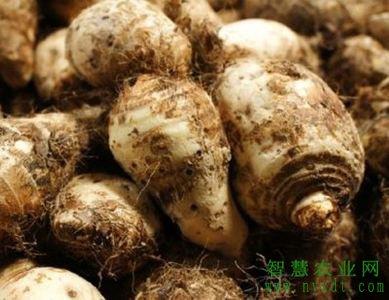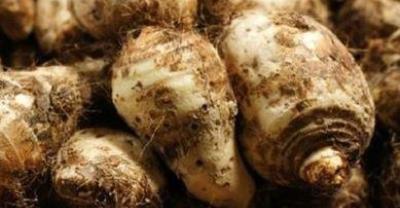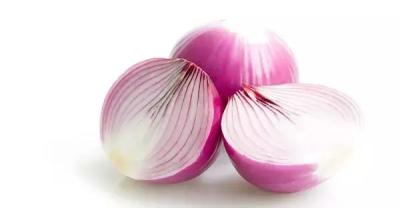Vegetable cultivation: storage, fresh-keeping, processing and harvest of taro
Taro is a perennial herb of Araceae, native to China, India, Malay Peninsula and other places. At present, it is mainly distributed in South China, Southwest China and the Yangtze River Basin, and there is also a small amount of planting in the North China Plain. The edible part of taro is bulb, which is rich in starch and protein. It can be used as food as well as vegetable.
First, storage and preservation
1. Burying method
In the high dry terrain, away from the water soaked indoor or outside, according to the number of taro, dig a long storage ditch, ditch depth of 50 cm to 60 cm. Spread a layer of wet sand 5cm to 10cm thick at the bottom of the ditch, then put the taro in the storage ditch and store it with the wet sand layer. Cover the soil several times according to the change of air temperature to keep warm and prevent frost. During storage, pay attention to prevent Rain Water leakage from causing stagnant water in the ditch; if leakage and stagnant water occur, immediate measures must be taken, or taro must be transferred to a safe place, otherwise it will cause decay.

2. Cellar method
Choose a place with high terrain, good drainage and shelter from the wind to dig the cellar. The cellar is about 1 meter deep, 1-1.5 meters wide and 2-3 meters long. Each cellar can store 1500-2000 kilograms of taro. Remove the damaged taro, rotten taro and diseased taro before storage, dry for 1 or 2 days before entering the cellar, or transport them to a warmer and drier room for temporary storage before and after the Beginning of Winter. Before entering the cellar, burn straw once in the cellar, or sprinkle sulfur powder to disinfect it. When entering the cellar, the bottom of the cellar and its surroundings are covered with dry straw or straw, and then the taro is put into the cellar with a pile of about 30 cm high, with an arc on the top, covered with a layer of wheat straw or straw about 10 cm thick, and then covered with soil about 50 cm thick. and beat tight, showing the shape of steamed bread. During storage, the pit temperature should be kept at 8: 15 ℃ and the relative humidity should be about 85%. At the same time, drainage ditches should be dug around the cellar (a little farther away) so that there is no stagnant water around. The temperature regulation in the cellar can be solved by artificially increasing the thickness and water content of the covered soil.
3. Outdoor storage method
Choose a house facing south, with a brick base at the corner of the wall, about 30 centimeters high, spread a thin bamboo pole on the ground, spread a layer of hay across, and then pile taro 24 to 27 centimeters thick. On both sides of the first floor, use bricks to build 30 centimeters high, put on a thin bamboo pole, lay hay, and then spread the second layer of taro. In the future, each floor can be stacked with about 4 layers. According to the change of air temperature, timely cover grass for heat preservation or ventilation to cool down, taro is generally stored under well-ventilated conditions with a temperature of 5: 10 ℃ and a relative humidity of 85%, and the storage period can be as long as 6 months. It can also be stored for a long time in a dry basement. In order to prolong the storage life and ensure the quality, the taro should be dried in a well-ventilated place for 1 or 2 days before storage, which can reduce fungal infection.
2. Simple processing
1. Cleaning
Taro for sale, packaged without mud, generally needs to be cleaned before it can be put on the market. As it is easy to cause large and small wounds during cleaning, disinfection should be carried out after washing. The simple way is to soak the washed taro in disinfectant, pick it up to dry or blow dry, wrap it in paper one by one, and then put it flat into the carton to keep it close to each other. Do not transport together with other fruits and vegetables that are resistant to low temperature.
2. Packaging
The packaging of taro mainly has the following processes:
(1) selection of raw materials. Taro with fresh, normal color, no damage, no decay and deterioration was selected as the processing raw material.
(2) peeling. Can also be peeled by hand, but also need to flush.
(3) soaking sulfur. Put the peeled taro into the soaking solution prepared with 0.2% vitamin C, 0.2% citric acid and 0.3% sodium sulfite for 5 minutes for 10 minutes, and ensure that the liquid does not pass the taro, so as to achieve the purpose of color protection, bleaching and anticorrosion. However, the soaking time should not be too long, otherwise the whitening effect will be improved after bleaching, but the sulfur taste is very heavy and cannot be eaten.

(4) scalding. Remove the taro from the soaking solution and immediately blanch the taro in 100 ℃ boiling water for 30 to 40 seconds. Blanching is to inactivate the activity of the enzyme and at the same time achieve the purpose of sterilization.
(5) floating cold. The scalded taro should be rinsed and cooled quickly in cold water containing citric acid.
(6) cleaning. Put the bleached taro into clear water and stir fully to wash the residual medicine on the surface of taro. The cleaning time should be a little longer.
(7) dry. It can be dried naturally or mechanically, depending on the fact that there are no more droplets on the surface of taro.
(8) sorting and grading. The taro dried naturally or mechanically is slightly sorted and graded according to shape and size.
(9) packing and selling. The graded taro is sealed with plastic bags or other packaging materials (suitable for 90% plumpness), and then it can be sold on the market.
You can stay in the field in warm areas and harvest it on the market after winter. Taro can be stored for 6 months and can be supplied to the market one after another before Grain Rain Festival.

(1) harvesting requirements
The taro must be drained after September. Taro should keep the soil dry and loose before harvest. A few days before harvest, the petiole of the aboveground part should be cut off and the wound should be healed before it can be harvested. When the taro leaves yellowed and withered and the fibrous roots withered, it was the best harvest time.
Remove disease, injury and rotten taro after picking and drying for 2 days and store in cellar. Those who do not enter the cellar for a while can be temporarily stored in a warmer and drier room.
(2) methods of storage and transportation
1. The ditch is 2.3 meters deep and 1.3 meters wide, and its length is determined by storage. The taro is spread 1.3 meters high in the ditch and then filled to cover the top of the ditch. It can be dug up and supplied to the market at any time during storage. When ditch storage is used in the Yangtze River basin, bamboo tubes or bamboo handles should be buried on both sides of the ditch as a ventilation device.
2. The cellar should be dug in the place with high terrain, good drainage and not facing the sun. The cellar is 1 meter deep, 1 meter wide, 1.5 meters wide and 3 meters long. The Beginning of Winter went into the cellar before and after. Before entering the cellar, sprinkle some sulfur powder into the cellar to disinfect it. When entering the cellar, the bottom is covered with dry wheat straw or straw, and then the taro is put into the cellar. The pile is 30 cm high and the top of the pile is curved. Cover it with a layer of wheat straw or straw 10 cm thick, then cover the soil with about 50 cm, and beat it firmly in the shape of steamed bread. Dig a drain a little further around the cellar. The temperature and humidity in the pit can be adjusted by controlling the thickness and water content of the covered soil. Each cellar can store 1500m2 kg.
3. Transportation and packaging taro is mainly produced in the south, supply the northern market, transportation plays an important role. Trains and cars are important means of transportation. Pay attention to anti-freezing and anti-decay during transportation, and necessary preventive measures should be taken to keep taro under suitable temperature and humidity conditions.
Baskets and cases should be used as packing in transportation.
(4) quality standards for listing
The corm is compact and clean, free of decay, cold cellar, frozen cellar, diseases and insect pests and mechanical injury; basket and box packing.
Source of the article [China Intelligent Agriculture official website]
- Prev

Can you lose weight by eating only vegetables?
Whether it's for health or to be more beautiful, losing weight is always a timeless topic. In order to lose weight a little better, but also to keep the body from flowing.
- Next

Many people turn a blind eye to vegetables with nutritional value comparable to ginseng.
Now people are not better than before, life is getting better and better, will pay more and more attention to health, eating will also be nutritious collocation, but life is the most nutritious common.
Related
- Where is it suitable to grow horseradish in China? it is expected to see the middle altitude horseradish in Alishan.
- How to prevent tomato virus disease reasonably? (Control methods included)
- Many people like to plant towel gourd on the balcony. What are the main points of this method and management?
- What crops can chili peppers be mixed with?
- Fertilization techniques and matters needing attention in Tomato
- What are the grafting techniques for peach seedlings in spring?
- Harm and control methods of root swelling disease of Chinese cabbage
- What are the pests of sweet potatoes? How to prevent and cure it?
- Symptoms, causes and Control methods of navel Rot in Tomato
- The cause of "Cucumber rotten bibcock" in Farmers' planting Cucumber and its Control Plan

